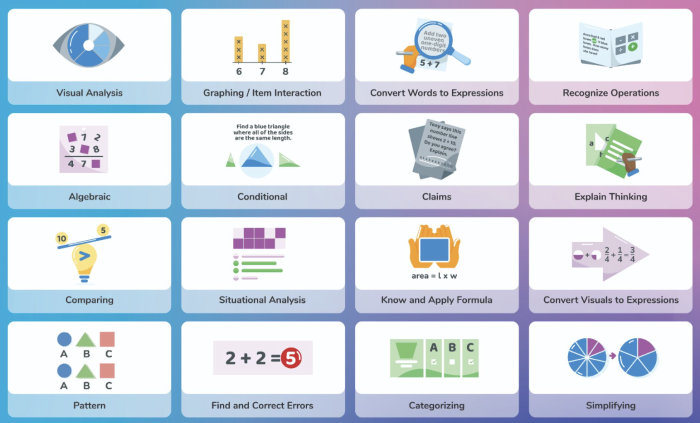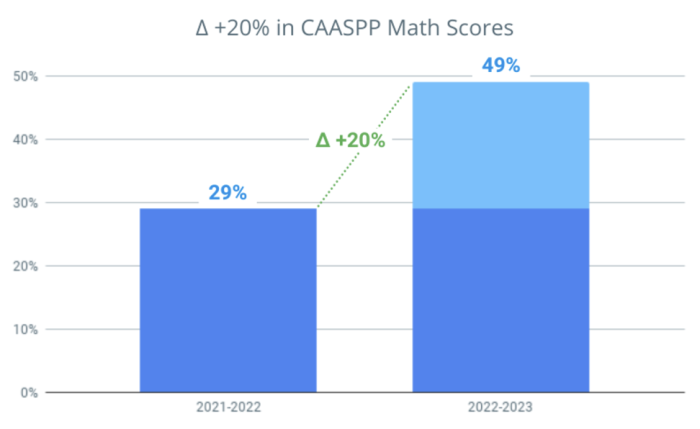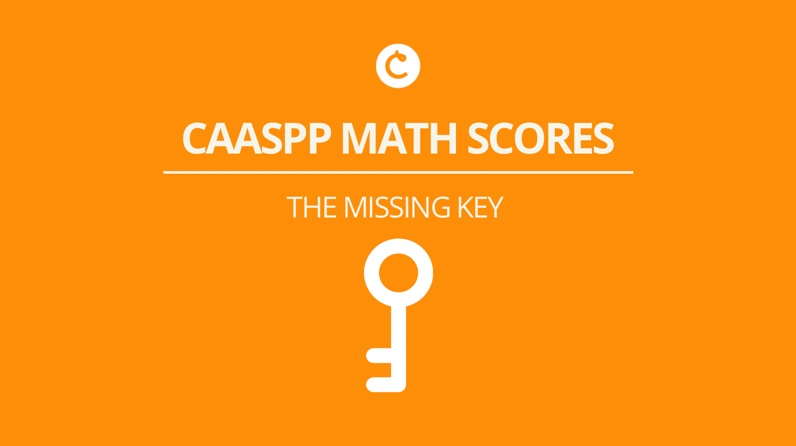Improving CAASPP Scores: The Missing Key
As reported in the Los Angeles Times (2016), many schools have been struggling with the math and ELA assessments coming out of the CAASPP design. Only 33% of students in the United States meet or exceed the educational standards. One of the questions we frequently get while supporting schools is, “How can teachers engage and prepare students without ‘teaching to the test’?”
This blog post will focus on the most overlooked of the three keys for improving CAASPP scores in elementary math: the type of strategic thinking that questions are asking students to perform. The goal is to recognize this kind of thinking and be able to create genuine learning experiences that help to improve the targeted type of strategic thinking.
The 3 Keys to Improving CAASPP Scores
There are three keys to improving CAASPP scores for elementary schools. Many times when teachers are getting back results from the CAASPP, they say: ‘I could have sworn my students knew how to add and subtract fractions, but they didn’t do well in the fraction section. I don’t know what happened.’
We want to get a little bit deeper into why that’s happening: The key that we’re going to be talking about today is strategic thinking. Students aren’t missing many of the questions because they don’t know the content; they are missing them because they do not understand what the questions asked, or they don’t understand the technology behind the question.
- Teachers and students understand the kind of thinking the questions are asking for and engage in strategies that develop this thinking.
- Students have the opportunity to practice with technology similar to the kind they will see on the CAASPP and preferably be able to receive feedback on their performance.
- Teachers know how to develop performance tasks and scaffold to do them with their students.
The goals for this particular training are:
1. Identify the types of strategic thinking that the CAASPP is demanding from the students.
2. Target specific strategic thinking when you’re looking at a question item.
3. Once you know the kind of thinking you want to teach, the next step is to find engaging activities that will help target it. If kids can’t have fun with it, then they’re going to have a hard time learning it – we don’t want that.
The 4 Main Cognitive Stressors of the CAASPP
If you remember the California Standards Test (CST) a few years back, there were two common stressors, which were:
1. Content: Students either knew the content or they didn’t; that was a big case of why they missed the question (e.g. adding fractions).
2. Vocabulary: Students didn’t understand the wording of the question and it would sometimes throw them off (e.g. “denominator”).
The CAASPP comes along and they added two brand new stressors:
3. Question Type: Do students know how to drag and drop? Can they interact with it? What about those checkbox questions? Checkbox questions drop scores by 30% – 40%, depending on how strong students are on the content.
4. Strategic Thinking: Then the type of strategic thinking (e.g. recognizing operations). How good are the students at reading a word problem, and knowing if it’s asking them to add, subtract, multiply, or divide? Take a look at these types of Strategic Thinking:

Let’s take a look at two types of strategic thinking: Situational Analysis with Comparing – so they have to compare all of these to each other.
A situational analysis question forces students to really look at each question in depth one at a time. You’ll see comparing questions show up a lot in checkboxes and they really affect the student scores: when the data comes back on this, it often looks like your students don’t know place value, but it was the type of question that got them, not because they didn’t know the place value.
How can students practice these kinds of question types? This is where you bring in technology. For example, Classtime would handle this kind of question perfectly, because it supports the checkbox format.
CAASPP Question and Strategy Analysis
These are the four questions that teachers should be asking themselves when they see a test release item:
1) What’s the content? In this case, we’re comparing fractions to whole numbers.
2) What is the question type? Is this computational? Conceptual? Problem-solving? A “what & why”? Or a skill-based question?
3) What’s the tech? What do students have to do technology-wise to pass this question?
4) What’s the type of strategic thinking? What kind of strategic thinking do you see being asked for here? Comparative thinking, since we’re comparing whole numbers. Algebraic thinking, because we have missing numbers that we’re trying to put in there. Then conditional thinking: there are tons of answers that will make this true.
Teachers need to be able to not only recognize questions, but they need to be able to create activities that help generate algebraic thinking, conditional thinking, and comparative thinking. Textbooks don’t necessarily do things like this; textbooks tend to really focus on their computation and their word problems. When students get to the problem above, they struggle because they’ve never seen anything quite like it.
First, you must analyze the questions, recognize the kind of strategic thinking, and then have the tools that students need to get there: this will help improve CAASPP scores.
Improving CAASPP scores: First Steps
It is important to look at the tech types, familiarize yourself with the types of strategic thinking, and be able to identify them. If you can’t identify them, you can’t teach the type of thinking. Classtime can be used to target all these different kinds of tech types and create some of the strategic thinking question types. You can create tables, checkboxes, and use visual analysis.
We help California districts achieve significant CAASPP score improvements by:
- Understanding why students are struggling (content, tech, strategic thinking)
- Maximizing the impact of existing math curriculum
- Building on successes of previous grade levels
This has resulted in increases of Δ +20% CAASPP improvements within the first year of implementation:

We are proud to be working on Strategic Thinking in Math and ELA with forward-thinking educators at:

We are a local team that is personally committed to education in California. We’d be excited to connect for a 15-minute consultation for your school or district!


